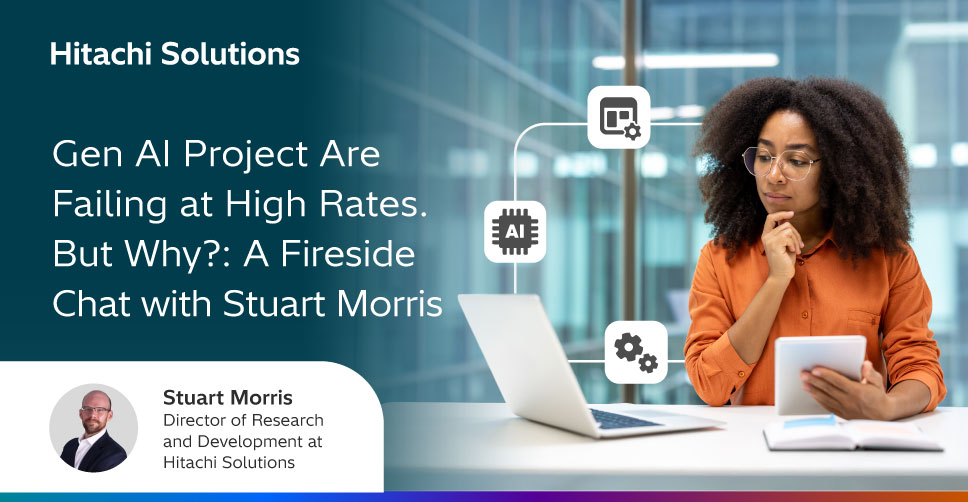

Generative AI has captured the imagination of the enterprise world—but the reality is more complex than the hype. In this fireside chat, Stuart Morris, Director of R&D at Hitachi Solutions, joined me to unpack the findings of MIT’s “Gen AI Divide” report and share practical insights from the front lines of AI deployment.
The conversation begins with a sobering statistic: 95% of generative AI pilots fail to deliver measurable impact on P&L. But as Stuart points out, that doesn’t mean they’re worthless. Many projects drive internal process improvements, enhance compliance, and streamline operations—benefits that don’t always show up on a balance sheet but are critical to business success.
Despite the rush to integrate powerful new models, about 5% of AI pilot programs achieve rapid revenue acceleration; the vast majority stall, delivering little to no measurable impact on P&L. The research—based on 150 interviews with leaders, a survey of 350 employees, and an analysis of 300 public AI deployments—paints a clear divide between success stories and stalled projects.
In our chat above, Stuart emphasizes that readiness is key. Companies often jump into AI without ensuring their data is clean, organized, and accessible. “There’s no amount of AI you can throw at a data situation that’s in shambles,” he warns. Instead, success starts with foundational work—cleaning up CRM systems, structuring data warehouses, and defining clear business processes.
This discussion highlights a recurring theme: back-office automation consistently delivers higher ROI than customer-facing AI. Internal processes are well-documented and easier to optimize, while public-facing AI carries reputational risks. Stuart shares examples of chatbots behaving badly on social media, underscoring the importance of starting with internal use cases.
Key Takeaways:
- Most AI pilots fail to impact P&L—but still deliver internal value.
- Data readiness is essential; clean, structured data is the foundation.
- Back-office automation offers higher ROI and lower risk than customer-facing AI.
- Targeted, repeatable solutions outperform one-off proofs of concept.
- Avoid vendor lock-in by deploying in customer tenants and delivering code.
- Success lies in purposeful design, tailored agents, and a steady approach to innovation.


